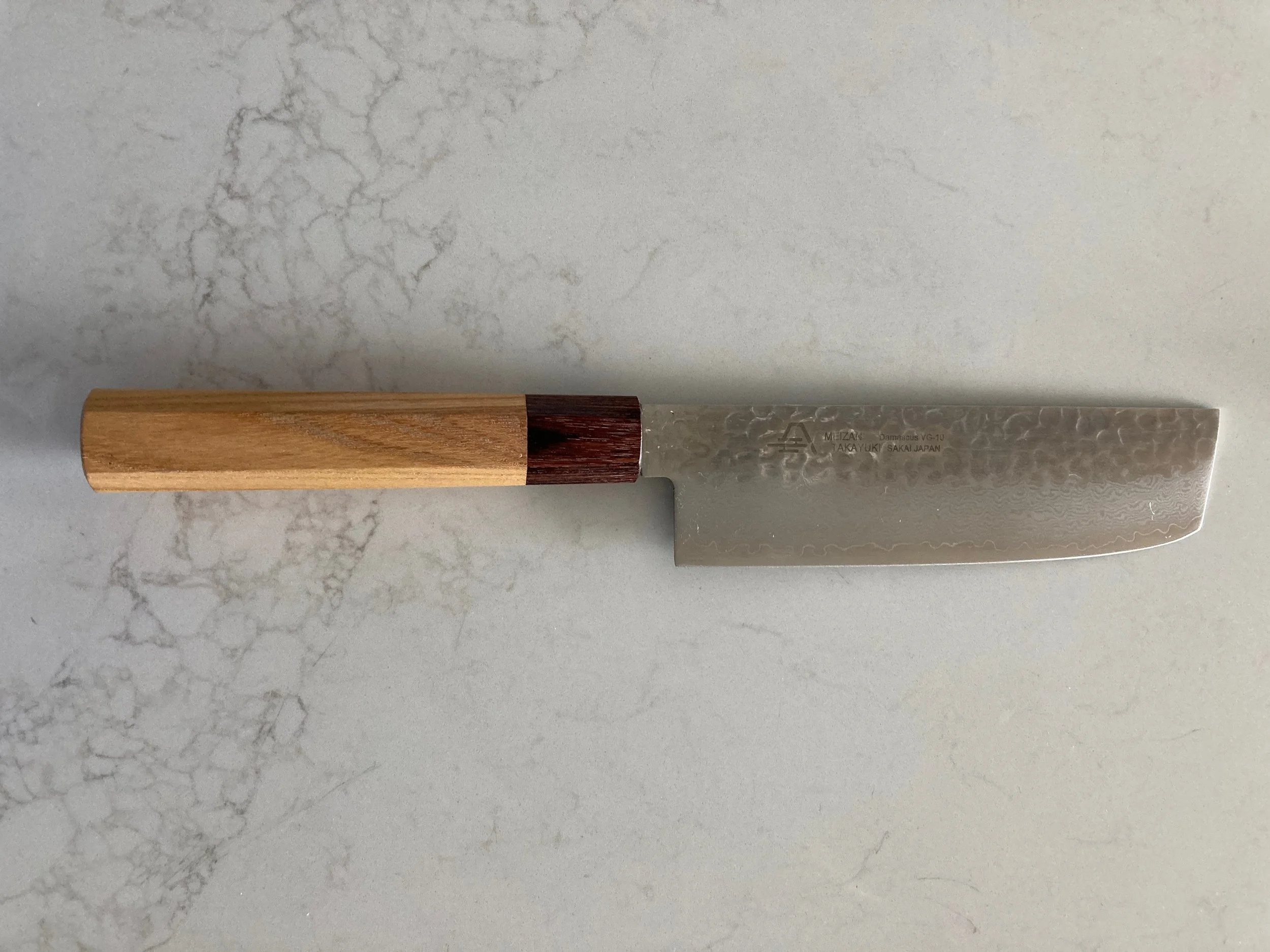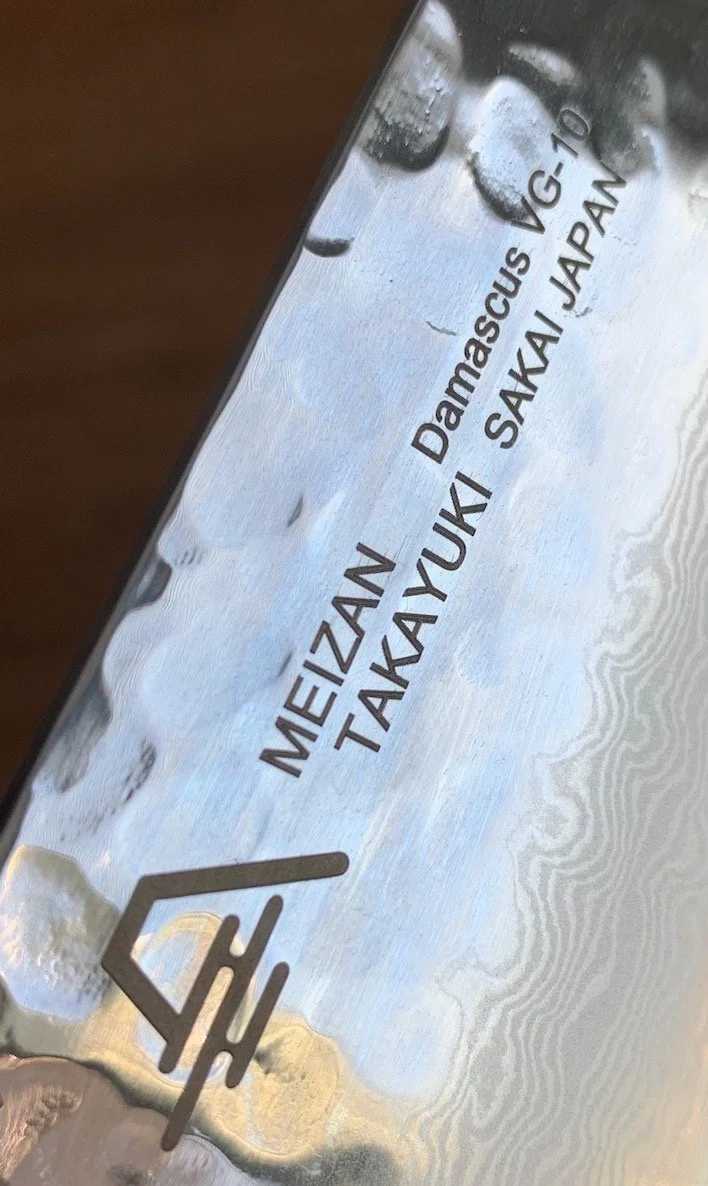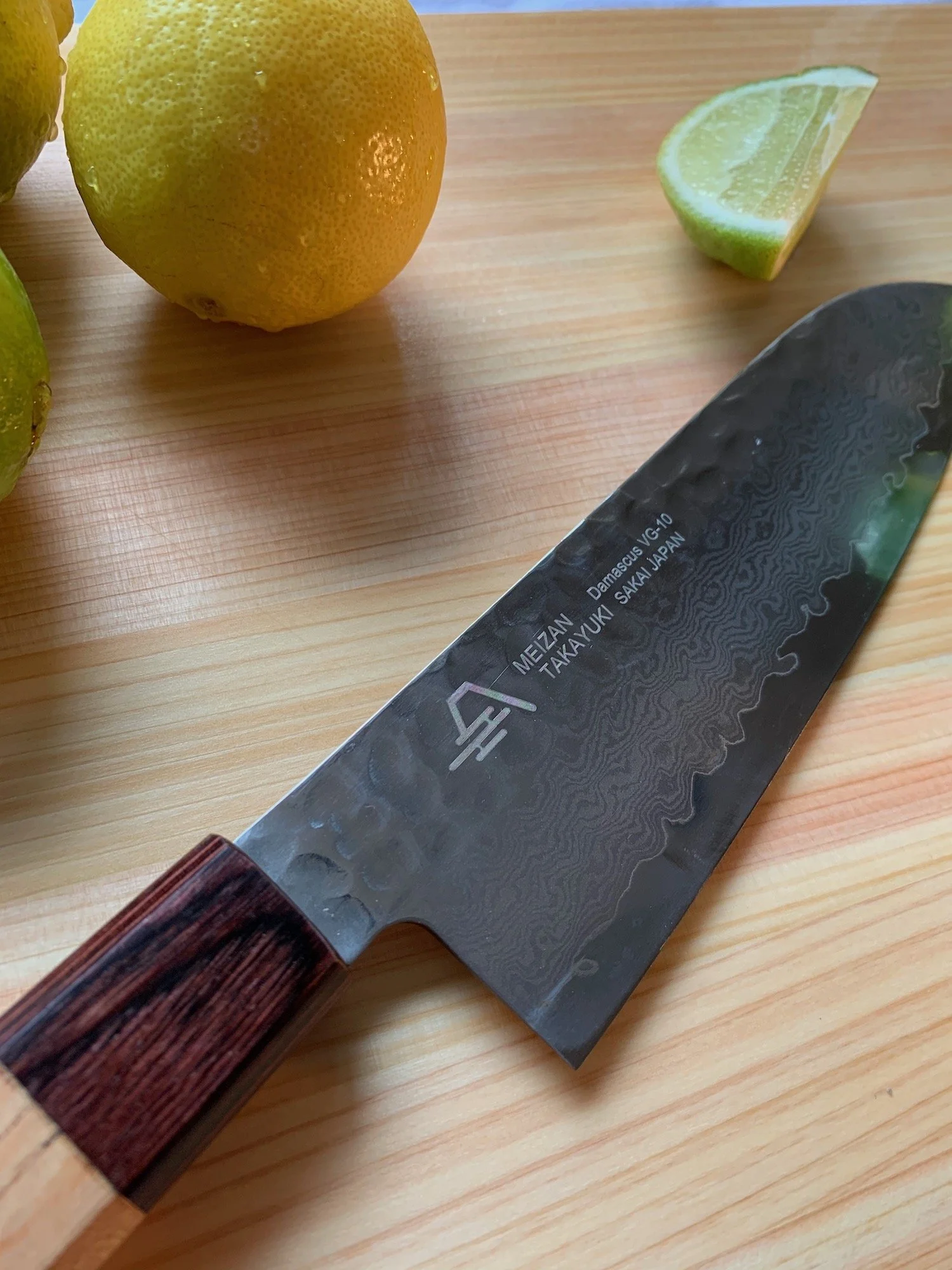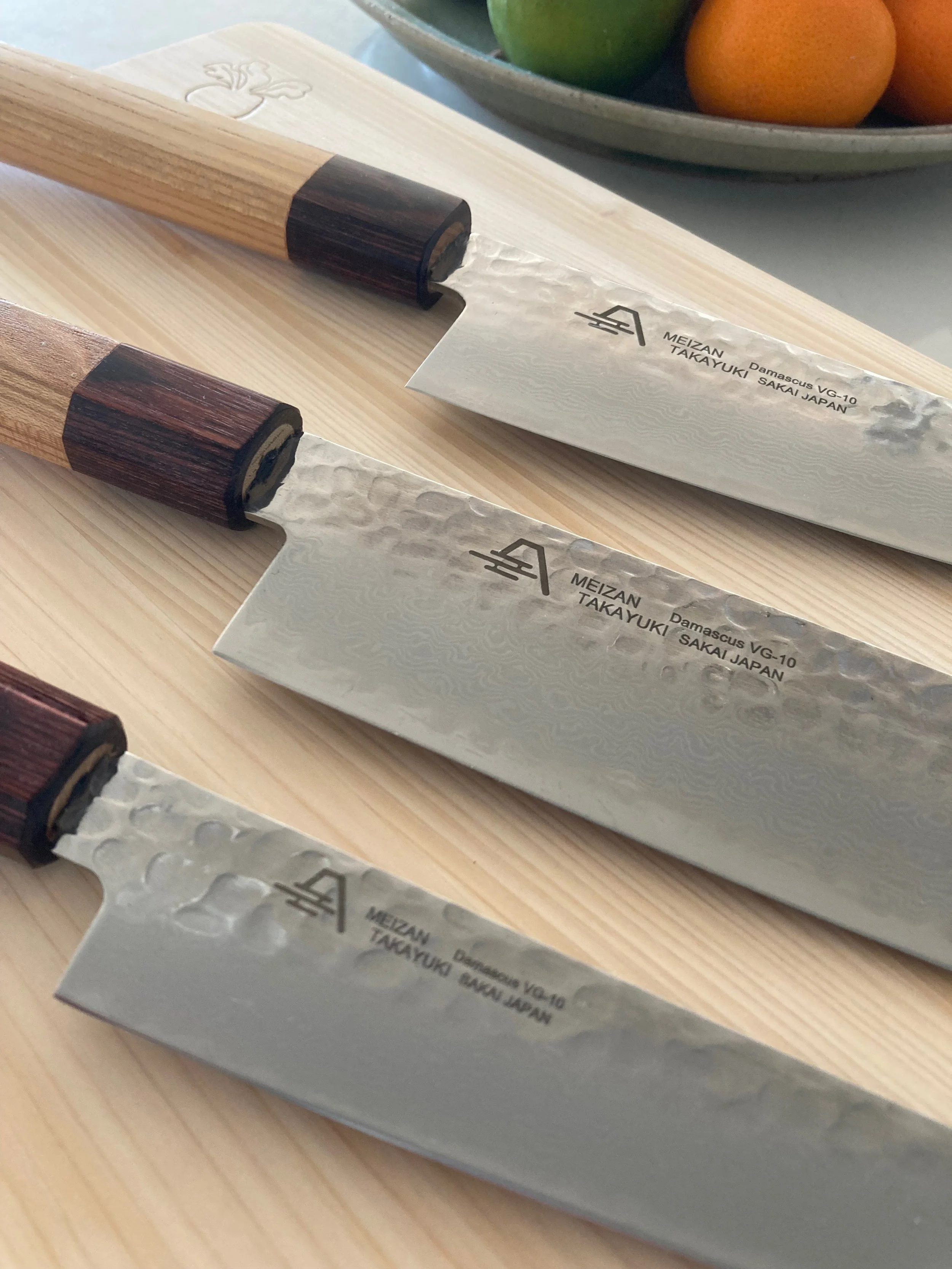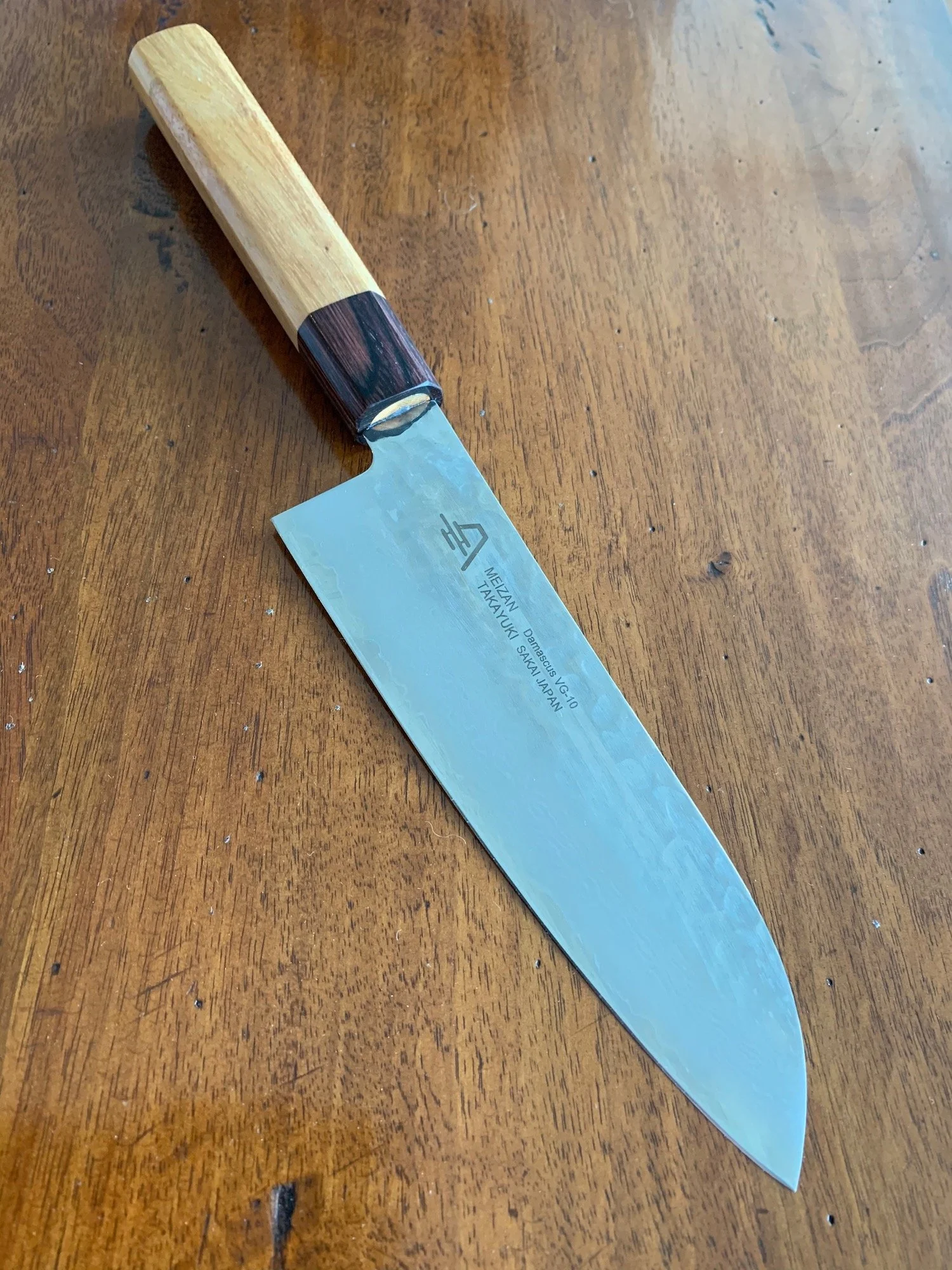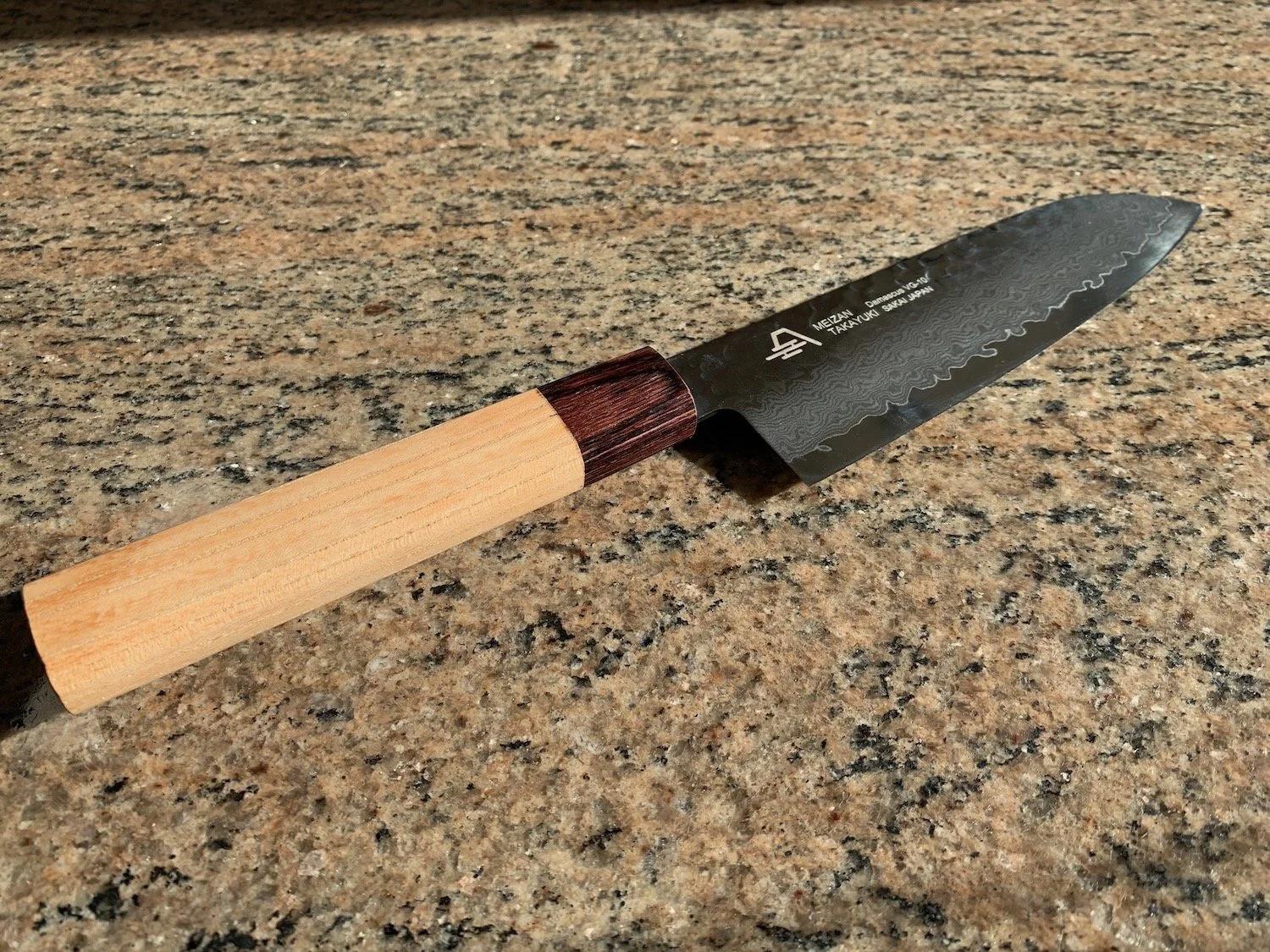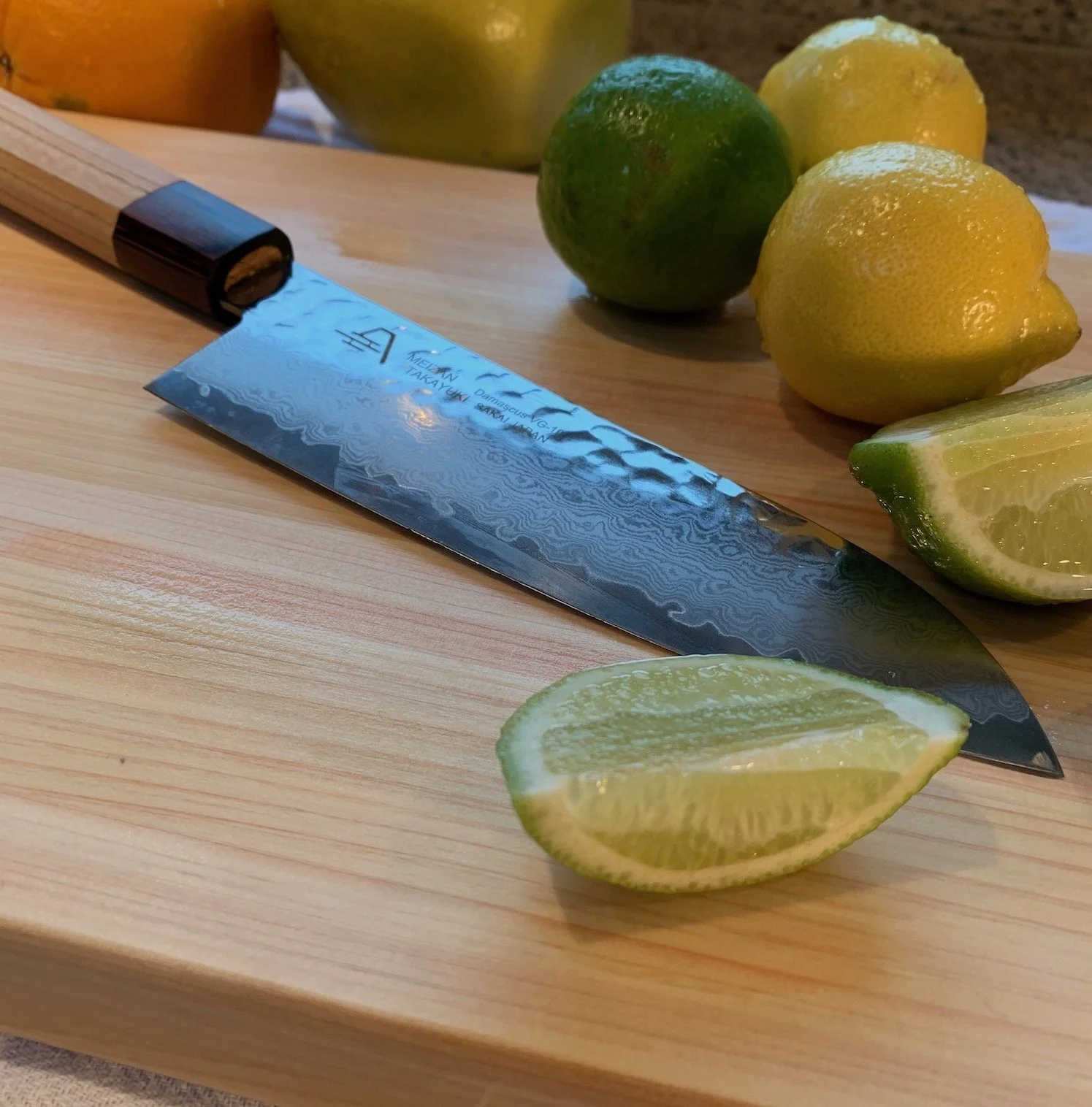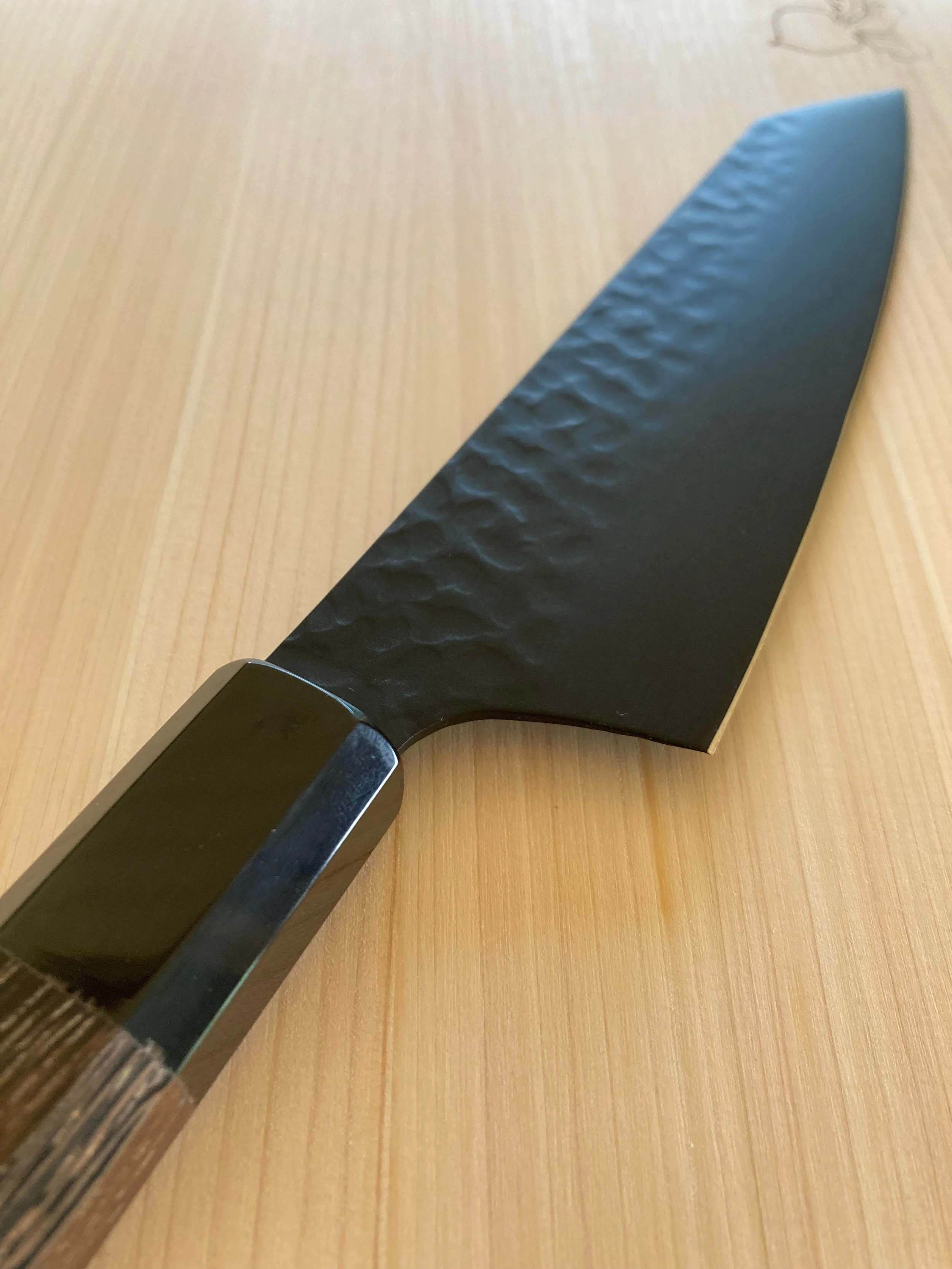santoku knife
Santoku benefits
Santoku knives are similar to traditional, western chefs’ knives in shape and size; however, the lighter weight and a thinner blade facilitate precise and nimble cutting. The knives are made by craftspeople at Sakai Takayuki, in Osaka following traditional sword making methods. These blades are forged by folding hand-selected steel several times resulting in ultra sharp, functional works of art. The handle is made from Keyaki wood, a Japanese Elm (Botanical name: Zelkova Serrata), commonly found in taiko drums. The double edge blade is hammered from Damascus steel, known for its strength and sharpness. Sized at 170mm, our mid-size knife combines comfort, balance and precision resulting in a great choice for general, all-purpose use. This blade should not to be used on bones or frozen foods. Please hand wash only.
nakiri knife
Nakiri benefits
Nakiri knives are traditional vegetable knives for home users. It’s style and function is based on the single bevel, Usuba vegetable knife used by professionals chefs. Nakiri literally means “leaf cutter” or “knife for cutting greens”. This knife if best used for chopping, slicing, dicing and mincing vegetables and fruits quickly and efficiently. The tall height of the blade allows for nice knuckle clearance when chopping and the square, blunt tip has the appearance of a small meat cleaver. This knife is also made by the craftspeople at Sakai Takayuki. The blade is forged by folding hand-selected steel and the octagonal handle is also crafted from Keyaki wood. Sized at 160 mm, this double bevel, uniquely shaped knife is a great compliment to any kitchen tool kit. This blade is designed for vegetable use only and not to be used on bones or frozen food. Please hand wash only.
Petty Knife
Petty benefits
Smaller than the Santoku, the Petty knife is a nimble Japanese paring knife great for peeling fruits and vegetables. It’s slightly longer length than a traditional western paring knife, makes it perfect for accomplishing the tasks of a paring knife as well as the tasks of a smaller chef’s knife; peeling, slicing, dicing, mincing smaller fruits, veggies, herbs and garnishes.
Sized at 150 mm, double bevel, well balanced blade is a perfect compliment to your knife collection, and extremely useful for chefs with smaller hands who like to perform more intricate and precise cutting tasks. It is said that the Japanese adapted the Petty from the western utility knife and the Petty knife got its name from the French word ‘petite’, meaning ‘little’ or ‘small’.
Wa-kengata knife
Kurokage Wa-kengata benefits
This 160 mm knife is unique and fun in a several ways. While similar to the other Santoku knife we offer (ie: Damascus hammered, double-edged, VG10 blade), this knife also boasts a Teflon coating which helps prevent food from sticking to the blade. It has all the components of a versatile, lightweight Japanese chef knife and also incorporates an angled tip – reminiscent of a Japanese sword which proves useful for making small, delicate cuts (Kengata means “sword shape”). Its octagonal handle is made from a dark, African hardwood.


